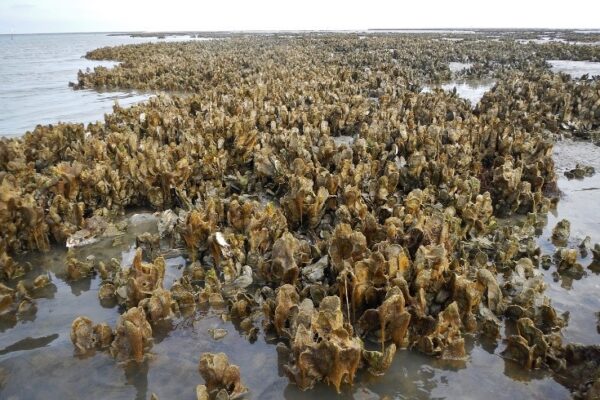Research has shown that oyster restoration projects in the U.S. have been largely successful, but ecosystem benefits may take decades to fully emerge.
In a study published in Conservation Biology, scientists synthesized data on the restoration of eastern oyster (Crassostrea virginica) reefs in the U.S. They found that such projects improved the local ecosystem by increasing oyster production by a multiple of 21. Restored oyster reefs also enhanced habitat for fish and shellfish by 34-97% and increased nitrogen cycling by 54-95%, which helps improve water quality.
Oyster reef habitats are considered critical ecosystems that create habitat and food sources for various species, improve water quality, protect coastlines from storms, and support fisheries. Image by Rachel Smith. To view image from source click here
A second study in Ecological Applications, published by two of the same authors, noted that eastern oyster restoration was the most successful in deeper, saltier parts of coastal waters that generate more tidal exchange. It also found that the number and diversity of oysters, fish and shellfish on restoration sites increased over time and that these reefs generally took at least eight years to yield long-term benefits.
“Both of these studies show that oyster restoration is by and large successful, even if it’s more successful in certain places,” Max Castorani, a co-author of both studies and a marine ecologist at the University of Virginia. “So that’s a really good thing, and that’s evidence that conservation practitioners can point to.“The studies also show the expectations managers should have about which ecosystem services should be benefited by their restoration projects, and how long those benefits might take to accrue [and] it provides guidance on where to construct oyster reefs,” Castorani added.
To read more click here
